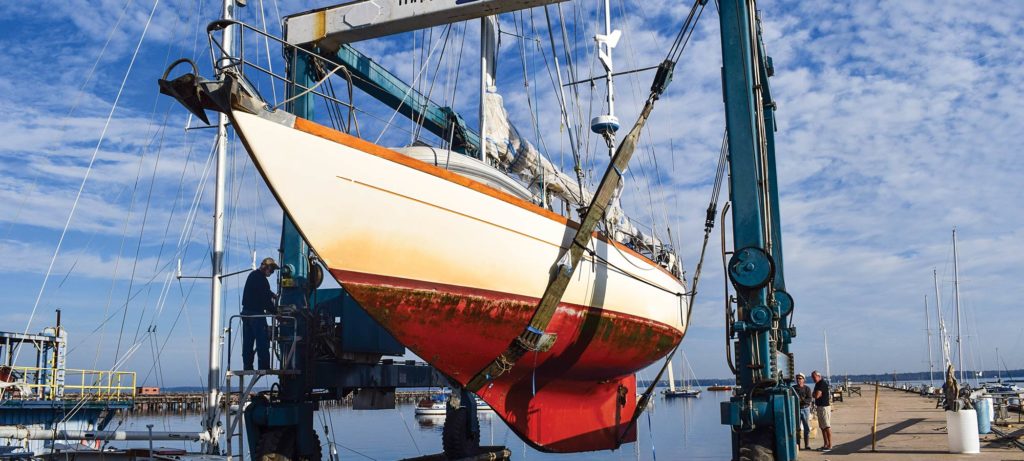
Full disclosure: We don’t haul out Lyra, our 44-foot classic ketch, for bottom painting nearly as often as we probably should. Because we live on it in New England, where the sailing season is short and yards are busy spring and fall, scheduling is an issue. And doing a bottom job is easily our second-most disliked maintenance chore (anything to do with marine sanitation handily takes first place). Despite the fact that it’s an infrequent occurrence, or perhaps because of it, my husband, Green, and I really, really appreciate the end result of a bottom job — a sweet-sailing boat that looks as good as she feels. Our last haulout, in January 2017, was desperately overdue (surprise!); Lyra basically had no bottom paint left; the last application of ablative antifouling had sloughed off during our trek south in the Intracoastal Waterway. By the time we made it to North Florida, we decided to take advantage of the do-it-yourself work yard at Green Cove Springs Marina (not to mention the shoreside accommodations at my parents’ house nearby) and finally give our girl some much-needed attention.
When we last hauled out for a bottom job in our home waters of Newport, Rhode Island, in October 2014, we took all the old paint layers off. After treating a few minor blisters, we used a primer/barrier coat and then topped it off with a copolymer ablative. Unfortunately, a few months later, Narragansett Bay more or less froze over (a rare occurrence), and the ice rubbed our beautiful new paint job bare in places at the waterline. Even with this bad beginning, we were surprisingly able to nurse the bottom paint along (with the occasional scrub from a diver) until our January 2017 haulout in Florida.
Most of the paint was already gone — fortunately, the barrier coat was in good condition — so it didn’t take too much sanding to get the bottom ready for new paint. Although we were mostly happy with the ablative paints that we’d been using since we bought Lyra, we were considering changing to a different type. Each paint option has its pros and cons, so let’s take a look at what’s available and how to decide what’s right for your boat.
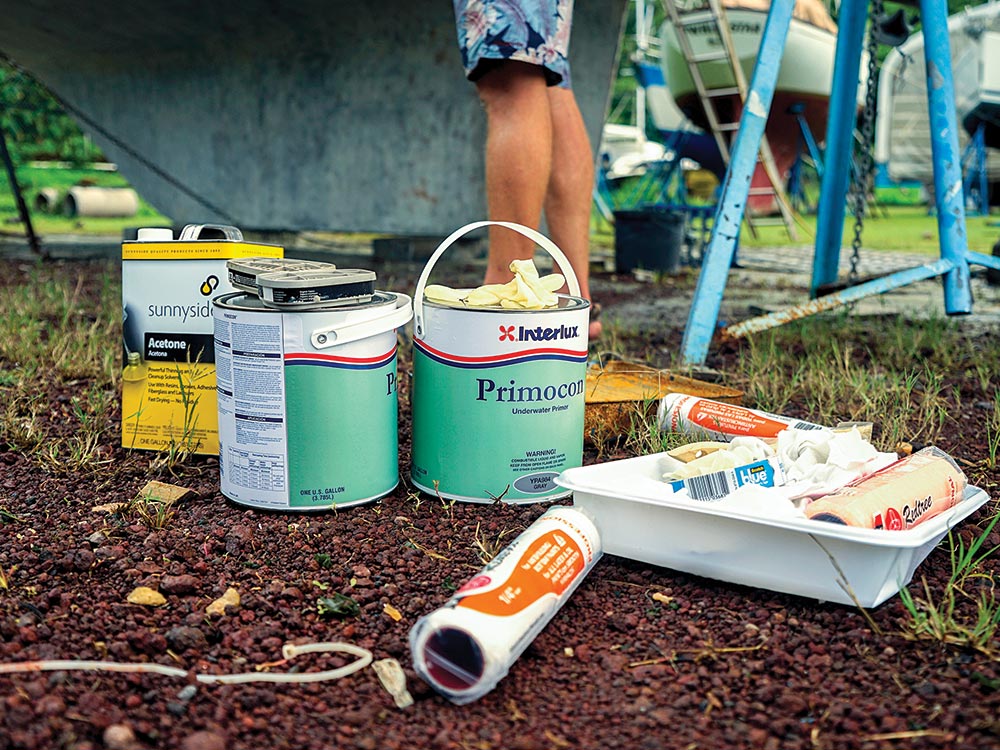
When choosing a bottom paint, the main decisions that you will need to make are whether you want a hard or soft paint, and what type of biocide you need. If your home waters are in a place with strict environmental regulations, such as some places in California, you might be restricted as to what kind of paint you can choose.
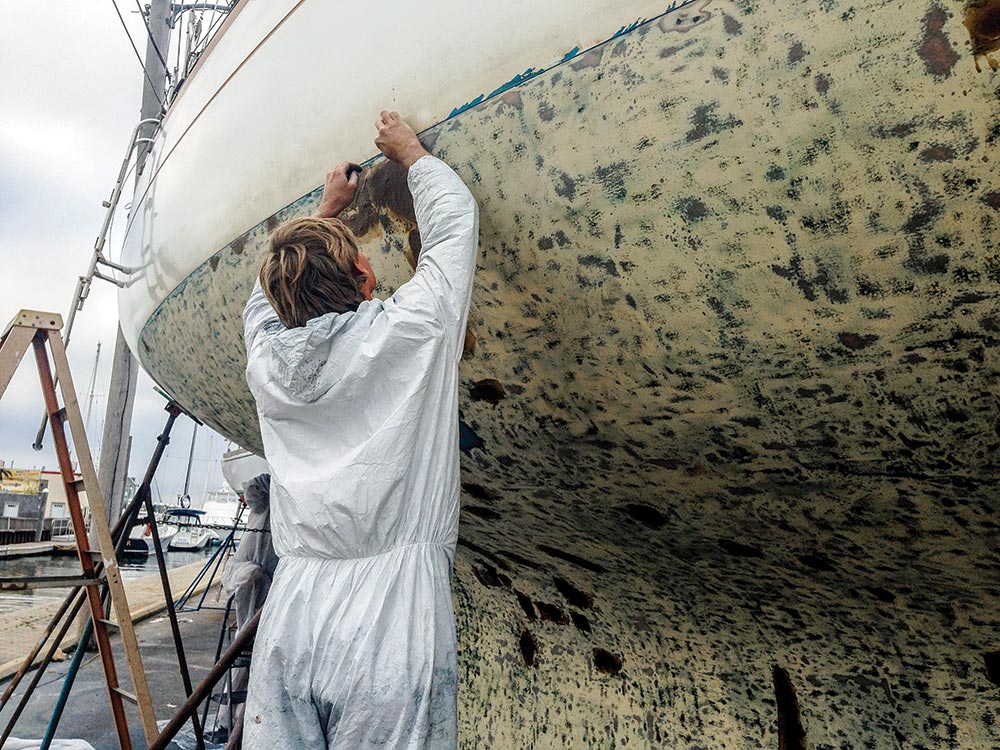
Biocides
Some of the biggest changes in the world of bottom paints over the past decade or so have involved the biocides used to keep fouling at bay. Long the workhorse of active ingredients, cuprous oxide is still the most commonly used biocide, and it’s found both in hard paints, such as Pettit Trinidad, Interlux Ultra and Sea Hawk Tropikote, and soft, such as Interlux Micron CSC and West Marine PCA Gold. It’s reliably effective. However, concern has grown over the years about copper toxicity in waters with a high number of boats. Another copper biocide is cuprous thiocyanate, which works the same way as cuprous oxide but is a white powder. This allows bottom paints made with cuprous thiocyanate, such as Pettit Vivid, to be made in a much broader range of bright colors, including white.
Paints labeled as copper-free typically use zinc pyrithione (also called ZPT or zinc omadine) as the active ingredient, and metal-free paints usually use a newer biocide called Econea. Irgarol, frequently used as an additive both in metal-containing and metal-free paints, is a biocide that offers highly effective protection against algae, slime and other soft growth. It is usually found in paints labeled as “slime resistant.”
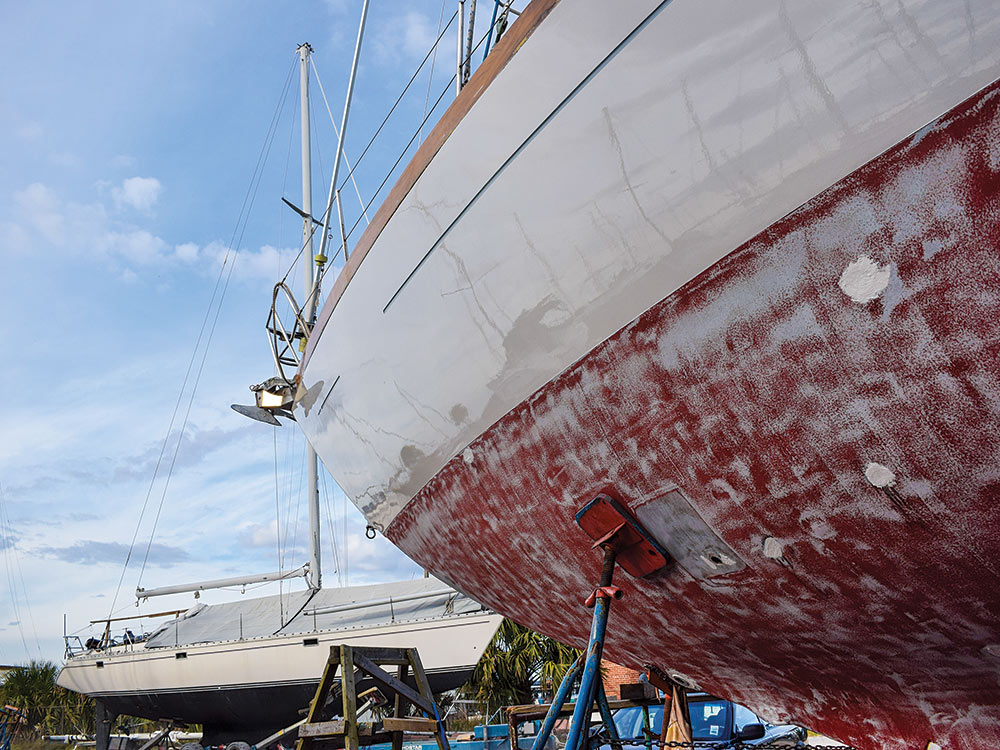
“I think the largest change in the market over recent years is in making antifoulings more environmentally friendly by lowering the amount of volatile organic compounds used, or by making them more efficient either by making the same amount of biocide last longer or using less biocide,” says Jim Seidel, marketing manager for Pettit Paint. “These changes have been driven by several forces, such as regulation, raw-material costs, companies wanting to do the right thing by the environment, new technology becoming available, and most importantly, customers asking for improved products. The acceptance of water-based paint has also come a long way since being introduced.”
Hard or Soft?
Modified epoxy, or hard, bottom paints, such as Pettit’s Trinidad and Interlux’s Ultra, depend more on a high percentage of biocide for effective antifouling than some other paint formulations. The paints adhere well to most surfaces, with most old paints needing just a light to moderate sanding before application of the new hard paint. These paints are recommended for boats that stay in the water year-round, and they work by leaching out biocide at a controlled rate through pores in the paint. For a biocide, most modified epoxy paints use a high percentage of cuprous oxide, usually around 60 percent. Since the paint will oxidize and become ineffective if the boat is taken out of the water, this isn’t a good choice for those who haul out for an offseason (unless a bottom job is part of the plan). Hard paint also does not lose its thickness even when all the biocide has leached out, so eventually you will need to sand or blast the layers off.
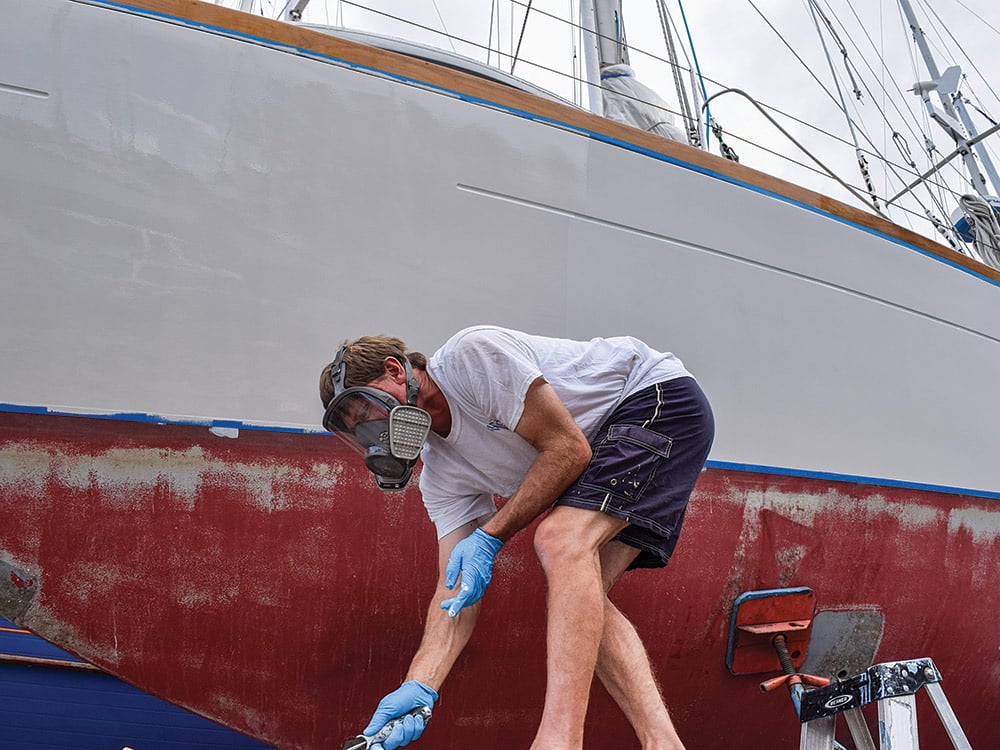
Similar to a bar of soap, a copolymer ablative, or soft paint, slowly wears away over time, releasing fresh biocide as it goes. These paints work well in high-fouling areas, and if you take your boat out of the water for the winter, the antifouling can be reactivated with just a light scrub. While the amount of biocide in soft paints is important for the paint’s effectiveness, the rate at which the paint wears away may be more so, and depends on the blend of resins used in formulating the paint.
In general, the paint you choose for your boat will be based on where you sail and how long the season is. Additional considerations also need to be made for metal hulls.
“Recommendations for a boat used in the Great Lakes with a four- to six-month season would be different from a boat in Florida that might be in the water for 24 months at a time,” Seidel says. “In high-fouling areas in warm salt water, a paint with a high loading of copper would be the general recommendation. If the boat is scrubbed often, a hard antifouling paint will be recommended. Generally, a multiseason copolymer-ablative-type paint can be used in all fouling conditions, but it will wear away faster in warm water.”
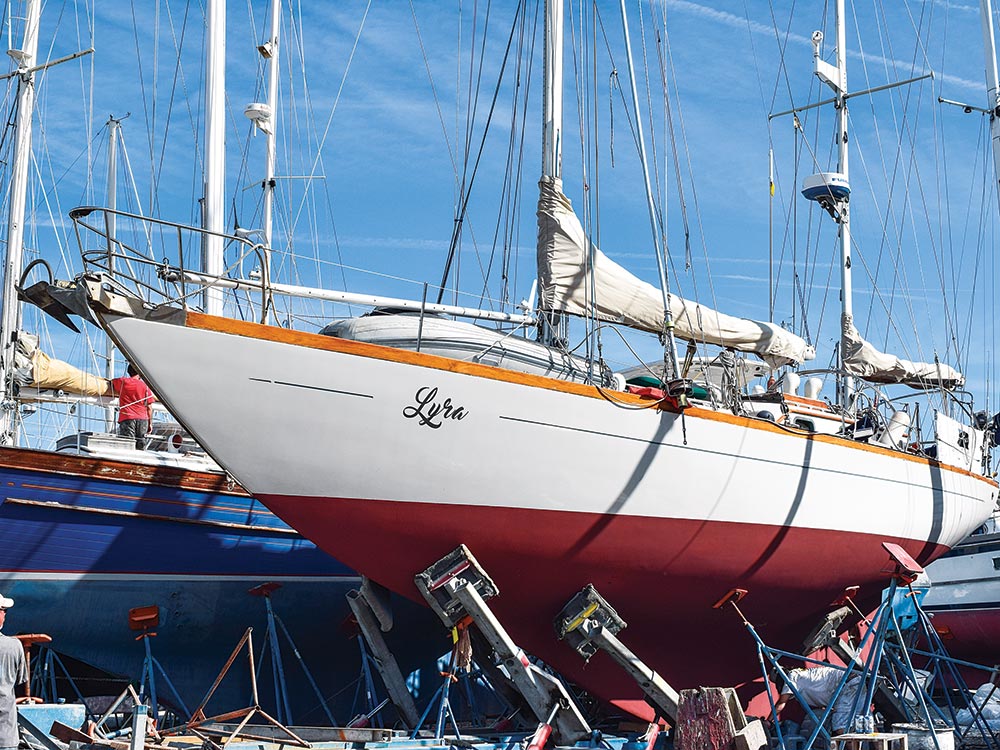
“I generally ask customers what was on the boat and how it worked,” adds Rick White, a technical-support representative from Jamestown Distributors, a marine supply retailer. “If it worked well, I tell them to stick with it or look at a similar product in the TotalBoat [Jamestown Distributors’ house brand] lineup if they want to save some money. If what they had on there didn’t work well, I ask them to check with other boats in their area to see what has worked.”
Looking Ahead
As research has shown the harmful effects of certain biocides that accumulate in the water, awareness of the problem has grown among mariners, and governments have banned some biocides such as tributyltin (TBT) and now copper in some locations. This has pushed companies to look for alternative biocides that have less of an impact on the marine environment but still keep hulls clean. “The next 20 years will bring even more changes,” Seidel says. “And for us in the paint industry, we will have to keep up with the regulations while trying to keep the cost of paint within reach of mariners. It is not going to be easy, but it will be exciting.”








